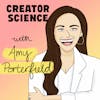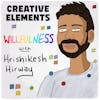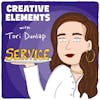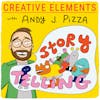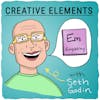
#126: Kayse Morris – from government assistance to multimillion dollar membership
Play EpisodeKayse Morris is the creator of The CEO Teacher and has helped thousands of other teachers break through the classroom glass ceiling.
WATCH
▶️ Watch this episode on YouTube
***
EPISODE DESCRIPTION
Kayse Morris is the creator of The CEO Teacher and has helped thousands of other teachers break through the classroom glass ceiling.
Kayse started selling her teaching resources from the kitchen table in 2013 after grappling with a four-year-long stint through deep (and I mean deep) postpartum depression. Today, The CEO Teacher is a multimillion dollar business.
In this episode, you’ll learn how Kayse transitioned from selling digital products to a membership, how to avoid making bad hires, how she manages such a large membership community, and why Kindness is at the core of her business.
Full transcript and show notes
Follow Kayse Morris on Instagram / YouTube
TIMESTAMPS
00:00 - From Government Assistance to Multi-Million Dollar CEO
01:15 - Kayse Has An Idea
04:40 - The Early Days of Selling Digital Products
07:58 - Kayse Built An Audience On Accident
11:01 - Her Life Changed Forever
12:31 - The Old School Way To Build An Email List
14:11 - Jay and Kayse Talk Music
16:10 - Struggles With Depression After Finding Success
18:17 - Change Your Mindset To Be A Better Boss
20:22 - The Team Behind Kayse Morris
20:36 - What Is An “Integrator”
23:01 - Teachers Are The PERFECT Entrepreneurs
25:31 - How Does Success Change Your Relationship With Money?
30:47 - You HAVE To Know The Customer Journey
32:16 - Don’t Do Memberships Like Kayse Did
34:05 - NEVER Say “Lifetime Access”
37:30 - The CEO Teacher Program Breakdown
41:38 - How To Manage A Community At Scale
44:50 - Become A Master At Launches
***
CONNECT
🙏 Make a guest or mailbag request
📝 Check out our curated Playlists
***
SPONSORS
💼 View all sponsors and offers
***
SAY THANKS
💜 Leave a review on Apple Podcasts
Learn more about your ad choices. Visit megaphone.fm/adchoices
Jay Clouse 00:00
Think about your favorite eighth grade teacher. Now imagine them quitting their job and running a multi million dollar business. That's the story of today's guest, Kayse Morris.
Kayse Morris 00:10
I am actually a former educator, a teacher, I taught eighth grade English and language arts. I was teaching in the classroom and I felt like I had everything I had ever wanted from my husband to my kids. And I just wasn't fulfilled and wasn't happy.
Jay Clouse 00:24
Kayse and her husband were just making ends meet and Kayse decided that she wanted to do something to make a little bit of extra cash.
Kayse Morris 00:31
I looked at my husband some random Tuesday night we were watching trashy reality television, like my guilty pleasure, I was drinking wine. And I said, you know, I'm buying all these lesson plans, and I'm teaching them in my classroom, but I'm really interested in just selling them to I think I can do this.
Jay Clouse 00:46
So in this episode, you'll learn how Kayse transition from selling digital products to a membership, how to avoid making bad hires, how she manages such a large community and why kindness is at the core of our whole business. I'd love to hear your thoughts on this episode. As you listen, you can find me on Twitter or Instagram @jayclouse tag me, let me know that you're listening. And now let's talk with Kayse.
Kayse Morris 01:22
I am actually a former educator, a teacher I taught eighth grade English and language arts in South Georgia. And I struggled deeply through postpartum depression. I am a mom of five. But at the time, I had three boys. And I was teaching in the classroom and I thought like I had everything I had ever wanted from my my husband to my kids, and I just wasn't fulfilled and wasn't happy. And so one day, I decided out on a whim to start selling my lesson plans online because I had been buying them online for years. That was back in October of 2013. So nine years almost exactly that I looked at my husband some random Tuesday night, we were watching trashy reality television, like my guilty pleasure, I was drinking wine. And I said, you know, I'm buying all these lesson plans, and I'm teaching them in my classroom, but I'm really interested in just selling them to I think I can do this. And I was like, and I think I could probably pay our Netflix bill, which at the time was $8. And we used to get the DVDs to us in the mail. And he was like, Sure, and great husband fashion. He's a high school principle. He's like, You should try it. And that first month, I made $50, about nine years ago. And now I own a multimillion dollar membership. And I teach teachers how to create an online business of their dreams.
Jay Clouse 02:35
And so that original product, first of all amazing that in the first month, you're like, Heck yes, I just made, oh, gosh, public math, five or six months worth of network or Netflix fees. But that first product, you sold that on a platform called Teachers Pay Teachers, right?
Kayse Morris 02:51
Yes. So teachers pay teacher's is an online platform, think Etsy or eBay, just for teachers. So teachers go there too. And back in the day, it was like, Oh, you're cheating. Like, you're just buying things that other people have taught? Yes. Like, how amazing is it that I get to bring someone else's knowledge into my classroom, when I was struggling, I was the worst teacher ever. I had postpartum depression, I hated my job, like I really, really was in a bad place mentally, and what a blessing that some teacher in the world got to gift my students, my 118 students at the time, an education that they deserve. So that was the kind of mentality that I took as I went into this whole thing. But teachers pay teacher's is how it all got started. And it's one of the 10 pathways that we teach our students how to sell and make money online.
Jay Clouse 03:39
For people who are listening to this who have some familiarity with digital products on the teachers pay teacher's platform, what type of like, what's the pricing model on that are people selling these lesson plans for like $5 $50 $100? What what is people typically look like on that platform?
Kayse Morris 03:55
I really try to instill in my students that the mindset of Teachers Pay Teachers and how you work, it's similar to Etsy, but the harder you work, the more money you make. And that's kind of how we have always been taught growing up, although it's not the way I believe anymore. So most of the products on that platform range from $4, to about $9. That is basic, you know, all across the board, as you get more well known. And as your products start to have some social proof, you can then create product lines and bundles and sell things, you know, a lot of lot more expensive, and like year long, like you could buy this for the year. And so that's kind of the path that we teach them is start small, and then we'll grow from there and get bigger. But for the most part, it is definitely the harder I work the more money I make. And we always say if you're not creating, you're not making so you have to continuously be creating and putting out new products for your things to be seen.
Jay Clouse 04:48
So let's go through the timeline a little bit more here because we're starting at this. All right, we had $50 Now on Teachers Pay Teachers. Today we're sitting here and you have a multimillion dollar membership. So there's a lot A lot of ground to cover there, I feel how did this evolve? What are the next few years look like to take the next steps towards today's reality.
Kayse Morris 05:08
I don't have all my numbers looking at me, but I'll go into the the beginning days, the first year, I made 600 bucks when I first started. And that was really exciting for me, my husband and I were on government assistance. And so $600 was life changing for my family at that time, we got to have a little bit extra in the budget to do things like go out to eat, you know, $600 may not seem like a lot to some people listening, especially if they're in the online space. But for us, it was everything, for sure. And then the next year, I made a couple of $1,000. And so that was like, wow, we could go to our favorite beach and we could rent a hotel. It was the first time I'd ever taken my kids to a hotel. And I vividly remember watching them play with the safe, the safe was on the ground. And they played for like hours, my husband and I were drinking champagne. And we were looking at each other and we're like, this is the life like they're so entertaining. But I knew that there were a lot more people that were more successful than I was. And so I kept asking myself, what do they have that I don't. And I put in a lot of effort, I actually drove an hour to Barnes and Noble sat on the floor and decided to read about what I had heard was called Search Engine Optimization. I sat on the floor for every Saturday, and I would read for hours and hours and I would take notes. I was too cheap to buy the books. And I would learn everything that there was to know about search engine optimization and a year three, I made $90,000 Wow. So I like to call it my Willy Wonka's golden ticket. That was what changed everything for me. And that was just the beginning of kind of where we are today.
Jay Clouse 06:38
When you had that year, you know, you said you've had $600 the first year then a couple $1,000 next year and then $90,000 That's still selling your lesson plans to other teachers, correct?
Kayse Morris 06:47
Yes, that was just on Teachers Pay teacher's. I was still working 40 hours a week I had three kids. That was me on the grind. Instead of drinking wine I was I was making lesson plans at night.
Jay Clouse 06:58
When you were thinking about SEO, does teacher pay teacher teachers pay teacher's have its own SEO? Or were you doing Google SEO? Are you doing both? How do you think about that?
Kayse Morris 07:08
So that first year, it was really easy to learn SEO and to rank on TPT. It was like this, you know, as I began to learn the tricks, everything was number one, I would be number one, number two, number two on search on TPT. Every single time which was exciting, the dream those were the dreams you could keyword stuff baby, you could do whatever you wanted to do, and you would be right there. But you know, the dreams, the times change and Teachers Pay Teachers grew exponentially as well. And so they have their own algorithm now. And it does take how long you've been there, how many followers you have, how great your content is, all of that goes into the equation. So it's not as easy to rank as it used to be. However, as long as you find the gaps in the marketplace, and you really are well versed in longtail keyword research, you can easily still rank and that's why our students are making hundreds of 1000s of dollars. So in the beginning, it was so easy, like I could do any and all things and it would do it. But it's definitely not as easy as it used to be.
Jay Clouse 08:05
Having all that success on TPT were you building your own audience or following that you could communicate with outside of that platform had that entered your world yet, I'm not sure how the dynamics of that platform work.
Kayse Morris 08:18
I didn't go into thinking about helping other people until 2018. So that was five years after I started now. In 2015. Another magical thing happened that was the year I made $90,000. And that was the year that I decided to start a YouTube channel.
Jay Clouse 08:33
Tell me more about that. How did that How did that start? And what did that journey look like?
Kayse Morris 08:38
If you're listening to this, I beg you not to go back there. YouTube does not bring me joy. Do it right now. You're totally going there. Now. YouTube was one of those things that I had no idea how long it was going to last. People will still tell you every time I enter into a show or anytime we get a new student, we always say where did you find us and 90% of them will say on YouTube. And I'm always like, oh man like that is so base level of our content. I started because I was out of postpartum depression. I was happy I was on top of the world. And all I wanted to do was to help people. And so I started a YouTube channel that was like, let me show you how I made some money. And so I did without any intention of ever making a business out of it. I just did it out of the goodness of my heart and everything I learned how to do I loved learning all the tech side of things. I would just go in and teach them so I was like, Hey, here's how you make this banner. Here's how you make this a gift. Here's how you put your products on sale. And so at the time I was building an audience for yours for free without ever having the business knowledge of oh, I'm going to make this a business one day.
Jay Clouse 09:45
I'm looking at this first video that you have on your channel from seven years ago. 194,000 views on your first video. Is that real? Did you remove other videos that happened first or do you genuinely have 194,000 views on your first upload a video to YouTube.
Kayse Morris 10:01
It's grown exponentially since our company has grown. I think people like to go back there, maybe I'm not sure. You know, that was when I was making other videos and I was blogging, I had a blog, and I wanted my ideas to take off. And so the multimillion dollar business was right there in front of me the whole time. But I didn't see it. I was like, Oh, I'm gonna teach them about living small or living on less. And all these ideas were circling. But that was never I can make money off of this. I was afraid of just trying to teach people about a platform that I didn't really know might exist later. It wasn't until I left the classroom in 2018, where I decided to make a program that answered the number one question I got asked at Walmart. And that was how did you leave the classroom? And are you guys struggling financially? And so I took what I had built, I had an email list then. But none of those people on that list were there for that reason. So I had to ask all of them, do you still want to be here? It was crazy. It was a crazy turn of events. But my life changed forever. That November day and 2018 When I launched my first course, called back then it was called Transform your resources. And all I did was teach teachers how to sell lesson plans.
Jay Clouse 11:09
That's amazing. So you left a classroom in 2018, presumably because of the success on TPT. And believing that income on that platform will continue. But your plan at that point was to begin teaching other teachers how to use TPT.
Kayse Morris 11:21
No, now when I left the classroom, my plan was just to sell I was making over $100,000 a year at that point. So my plan was just to make $100,000 a year I was happy. I was happy there. So that was it. That was January. And then I launched my program in November. So about June and July was when I decided okay, well, like maybe I should just sell a course I just thought it was going to be extra plus income, you know, maybe a couple grand here or there a couple times a year before Christmas, so I can buy a gift for the kids. That was the whole plan. And how did that course launch go? I was seven and a half months pregnant. I opened card at 8am. Eastern Standard Time, lots of hype. I was really excited. I did a video series, my husband brought me a cookie, and a Diet Coke. And he went to work. And in the first 30 minutes, I had made my teaching salary for the year. What? Yeah, my life changed forever. I hit my knees, I always get emotional. So I can't talk about it very long. But I started crying. I called my husband he thought I was in labor. So yeah, and I actually did go into preterm labor two days later from excitement, but we always well, so yeah, it was my life changed forever.
Jay Clouse 12:28
Oh, my gosh. And so how many people did you launch this to how big was your email list at the time, because that sounds like an incredible result for a first time course launch.
Kayse Morris 12:39
Yeah, I had 12,000 people on my list over the years of teaching at random teacher conferences back, this is so not legal now. But I would like teach a conference and it'd be 300 people in the room. And I would say leave your email address on the Notepad as you leave and I'll send you free goodies. And I did for years, I just set them free stuff. So that was kind of how I literally develop my email list by paper and pen. And about 8000 of those people stayed for the launch, when I said, Hey, you got to click this button if you're interested to stay in. And they did, I had like the most engaged email list back then it was a little bit easier to get in the inbox. But yeah, that was kind of how it all it all went down. And the program at the time was, you know, J, I think it was $399. It might have been $500. But we had like almost 400 students.
Jay Clouse 13:26
That's amazing. Also, I love that approach of you know, I think about musicians and bands a lot. And I wrote about this. Recently, I went to a show with my wife, we went to just a local live show a guy who had been traveling from Europe, actually, at his merch table, he had a clipboard with a paper and pen to say, join our mailing list. And that's just the way it's been done. You do that. And you get some people on the list. And you show up in Columbus again a year later. And hopefully some of those people show up again, bring their friends. And I think you know, in this world of online creators, we we expect things to be faster and easier. We want like 10x that paper list like tomorrow because we had a great thread do well on Twitter, but man historically, it's like years of showing up giving people the ability to say I want to hear more. And just seeing that little by little it grows and eventually that can become a really big result. I'd love that story.
Kayse Morris 14:19
Yeah, who's your favorite band if we're going to talk about music because I'm a big music person who's my
Jay Clouse 14:23
favorite band? Well, actually, my favorite band is called Murder by death, which sounds insane. It sounds like a very incredible metal band and they are not.
Kayse Morris 14:33
Oh, okay. You're not my favorite band is called widespread panic, which is also not an incredibly crazy mosh pit band. Like it sounds like there's a mosh pit but there's not. So what kind of music is it?
Jay Clouse 14:43
It's like folk, it's like indie folk. I mean, like one of the main instruments is a cello, you know? So it's not too too crazy. You strike me as like an event brothers fan who's also a great band.
Kayse Morris 14:54
Yes, I like a bit brothers. I'm actually big Grateful Dead fan and I'm going to their last show The last shows is this year, so I'm really excited about that. But yeah, widespread panic. I've seen my favorite band perform 75 times.
Jay Clouse 15:05
Wow. What? Yeah, what? You must have followed them around for like a whole year?
Kayse Morris 15:11
Yeah, yeah, we did. Basically, I started making money and we started going on tour. Our kids got a little bit older. But yeah, those were those were fun days. Those are fun days.
Jay Clouse 15:20
After a quick break, Kayse and I talked about how she turned her massive course launch into an even bigger membership. And later, we talked about how she manages more than 4000 students in her community. So stick around and we'll be right back.
Jay Clouse 15:35
Welcome back to my conversation with Kayse Morris. When we left Kayse story, she had turned her goal of paying her $8 Netflix subscription into a six figure course launch. So I asked Casey, what happened next?
Kayse Morris 15:46
I thought that it would bring me more joy than it did you know, I made all this money. It was like, over 100 grand in seven days, it was like $124,000 or so. And my life got exponentially harder. I was pregnant, and I felt so guilty and not worthy. And then I started to think well, did this just work for me? Like, can I really teach other people how to do this. And because I had that doubt, I put that seed of doubt in our students and to some of them, you know, and some of them would try me on that, well, I did this and it didn't work. And so my I didn't sleep for months, I didn't sleep, and my baby was born. And I was always up and I was always working, I'm holding him, I'm feeding him I'm on my computer, you know, to think it was magical would be so far from the truth. I really struggled then just trying to be the best me that I could be. And it took me a few years of proving that yes, we really have this together. I built a team, I built a team the wrong way the first time. And little known fact is I was a horrible boss, I built a team of just two people. And both of them quit on the same day as I was getting on an airplane to fly four hours away. And it was one of the hardest days ever. And I had to pick up the pieces. But I learned so much from that I learned what I don't want, who I don't want to be I don't like me very much. And so I had to fix that. And now I'm happy to say that we are in our stride, I work so little compared to everyone else our team gets, you know, four day workweeks. We're all happy. And I can say that with confidence. And it's been a rocky road to get here. But things have changed over the last few years. We'll chat about that about how we've morphed from core sales to membership sales if you want to. But I had to change as a person and I wasn't the person that was a little girl who whose Daddy didn't make much money and whose mom has stayed home and we read the meter and who was on government assistance. I wasn't that girl any more money wasn't going to leave me. And I didn't need to treat people like they were less than because I was paying them. That was the mindset that I had. So I grew a lot over the last four years, I have grown a lot.
Jay Clouse 17:54
You mentioned like maybe treating people like they're less and because you're paying them. How does that actually play out though, because I feel like if creators listening to this are making their first hire, they might not realize the way they're behaving towards contractors or even employees. So what would you recommend? Based on your experience? How should this dynamic look and feel to know that it's good for both parties?
Kayse Morris 18:18
Yeah, I was paying them. They I deserved them to do this, this and this and whatever I asked, they had to drop everything. You know, there were no boundaries. There were there were no, there was no rhyme or reason I was paying them really well. And so in my mind, I'm like, Well, you I'm paying you really well, I hope you'll do this, this and this very quickly. And it just wasn't a good it was always tension in the air virtual tension in the air. It was always I'm your boss, you listen to me, I was in command. And that is absolutely not how I would ever recommend teaching anyone. My right hand woman now is the kindest human I have ever met in my entire life, she challenges me to be a better person every single day. And we came up with a core company value. And it was be a good human good to all people. And I had to live and breathe that. And so I decided that I would get out of my own way and get out of her way. And stop thinking that this business could only survive if I was doing the work. And so if you allow yourself to move, and if you put in the right systems and the right processes, where there's no room for questioning, there's no room for error. And you say, but I want you to go further. I want you to bring this to life and show me what you are made of your team will make it better than your wildest dreams. And our team has done that we now have a full time. She's our integrator, and she does all of our tasks. And we have a full time copywriter and a full time graphic designer. And I rarely go do this, do this, do this or integrator creates all the tasks and I say show me what you can do. It's a lot more detailed than that. But that has been the best blessing. And I no longer think because I pay you You owe me I go hey, let's live. Let's live a great life together and what does that look like to you and how can I help you get there?
Jay Clouse 19:59
So sounds like you have a team of five people now is that correct full time employees.
Kayse Morris 20:03
We have three full time employees besides myself. So four. And then we have a few contractors from our podcast director to, you know, customer service and that kind of stuff.
Jay Clouse 20:13
You're using the term integrator, which I'm familiar with from I believe traction, right? Yeah, yeah, we're book nerds. I forgot about that. For people who aren't familiar with that term. What does it mean to have an integrator on your team? And how do you interface with her?
Kayse Morris 20:25
I was in like a coaching program, and they recommended traction, and I was totally not ready for it. I read it and was like, Oh, wow, this sounds great. And but I tried to do all the things with the people, my first group of people, but I was like, Do this, do this do this. It wasn't until I read the book, the E Myth Revisited by Michael Gerber, when I really figured it out, I needed to read that first. And I needed to put those tactics into play before traction was ever something that could happen, that could become a reality. And then from traction, we read rocket fuel, and my integrator and I read rocket fuel together. And, you know, I love those books. And I think that they're amazing that they're just a tool. They're just part of the equation. And so I don't live and breathe them. I don't think that they're the only way. But I always ask our integrator, how are you doing? How are you feeling? Is the good outweighing the bad? And how, you know, mental health check ins are just so important for us. But she is the salt of the earth? I don't I could not do this without her.
Jay Clouse 21:22
And what is her job look like? What does it mean to be an integrator?
Kayse Morris 21:25
She is our task creator and our task supplier. And let me kind of explain how that works. So we have a project management system called Asana, a lot of your listeners may be familiar or monday.com, something like that, that just allows you to create what everyone's supposed to be doing. And so I create the vision, it's, Hey, let's do this, or, Hey, this is when this launches, or I'm looking at where we always plan all of our quarters a year in advance. So q1, q2, q3, q4, and then she says, Alright, so here's what we're doing. Here's the dates, here's everyone's time off, our employees get four weeks a year, and we have a very relaxed schedule. And so what she does is we do vacation first, family first family always is also one of our core values. And so everything gets planned for the year first, then she takes all of our big projects that we're going to do, she creates the project, and then every person on the team is assigned every task and sub task and every due date. So I was not good at that I was really, really bad at that. And when I had our other employees, I was like, do this do this, but my timeline of events was bad. I have the vision, I don't have the execution. And I don't think now I could ever do this without a right hand woman or man beside me to help me guide me because I'm really, really bad at organizing and making sure things are done in a timely manner.
Jay Clouse 22:39
How did you find this person? I feel like a lot of people listening to this are thinking, man, that'd be awesome to find somebody who can handle that. There's a very particular skill set, it seems so how did you go about finding someone that not only had that skill set, but fit well with you?
Kayse Morris 22:52
I think it was divine intervention. When the two women that I chatted left us, I had just hired her as our like community support person, she was working a couple hours a week, and she said when they left, I'm gonna help you I'm gonna I'm gonna pick up the pieces. I believe in this every person that is on our team, and that has ever been on our team has been a student in our programs. And so for me, I tried to hire people that weren't students, and they didn't get it. They didn't understand our world, I'd say, Alright, you've got six weeks to dive into the programs. Teachers are a very specific type of people, and we pride ourselves in hiring former educators. So from there, Ali and I just grew together, you know, she figured out how I worked. And I really said, I don't ever want to do what I just did again. And so I will do basically whatever you need me to do to make this a reality for you. And so, because I let go, I think that's why it was able to be such a success.
Jay Clouse 23:48
I talked to our mutual friend Daphne Gomez about this pretty often. I feel like teachers, former teachers, such an incredible talent pool, because of all the pressure they're put under to be a teacher, they get so good at time management and going through like a lot of the red tape that happens to check the boxes, like the school ones the district wants the state wants, it just seems to me like an incredible place to look for a new hire. And it sounds like that's been your experience as well.
Kayse Morris 24:21
100% teachers make the most perfect entrepreneurs. Teaching is something that people are born with usually, but it's also something that can be taught and something that people can get better at over time. And your experiences are what molded you and so being in the classroom and every single day, 180 days a year having to figure it out on your own literally sink or swim. You got you got to swim, you can't see because you've got all these kids that depend on you. I think that it develops teachers in a way that not most jobs do. We don't there's no hand holding. There's no one to help guide us. It's just hope this works out. Here's the lesson plan See you later. And so if we want to not live in chaos, we To figure it out on their own, and not that not that all jobs don't do that, but educators particularly do that. And so I think that's why they make perfect employees and perfect entrepreneurs.
Jay Clouse 25:09
When you had this, this huge success of the course. And suddenly you're, you're making your your previous salary in a matter of minutes. How did you change your relationship to money? Because I feel like at that point, you probably had one type of relationship to money, you know, having the experience of living in a one bedroom trailer with with your husband, that's a difficult transition to manage for a lot of people. Can you talk about how you went through that and normalized it to where you are today?
Kayse Morris 25:37
Yeah. And I still have moments when I live in lack, and I am like, Nope, I have to I see it. Now. I recognize it, and I snap out of it. But now that I've fixed my mindset, I see so clearly why people don't make money. I see it so clearly. And it's not something that I think anyone can fix for you. It just takes time. And so I first read the book, you are a badass at making money by Jensen zero. And it was like funny and fun. Yes. And I was like, Yes, I can do this. And that was kind of like the go getter book of you know, I got this. But right before I launched my course, a couple of weeks before I launched my course. Speaking of I decided to read the book Thinking Grow Rich by Napoleon Hill. And I drove to that Barnes and Noble when I bought this, it was about an hour away. And I got like the one that looked old school. And I had no idea. I had no idea that this book would change everything. For me. I heard about it originally through Daymond. John on Shark Tank, I've always been a big shark tank person. And he said, he never left home without it. He flew with it. He always had it anytime he was feeling down. He just read it. And I was like, well, it must be a good book. If Daymond John says that. I had no idea. I read it. You know, I highlighted it. And I did everything that Napoleon Hill said to do everything. And that's when my mindset truly began to change to this day. And my calls it I have a whiteboard. And I wrote down there is like a paragraph. Have you ever read this book?
Jay Clouse 26:57
I actually have it. And I feel like a dummy for now. Because I've heard it so many times. But like, it's one of those things where I falsely assume I'm like, I get it from the title. Like if I if I think like, I can be rich, I will be rich. But also, like I just looked at the size of that book. That's a much bigger book I was expecting.
Kayse Morris 27:13
Yes. And I read the book dollars flow to me easily and like that is that you know, that whole mindset, I was like, Okay, this is gonna be fine. But what he didn't know, I will say there's no women in this book, which is kind of you know, I'm not I'm not a big fan of that. But it was written in the 30s. So I'll get a cut you some slack Napoleon. But he talks about Thomas Edison, he gives such great stories. But the best part of this book, and this is really what changed for me is that he creates this paragraph and in the paragraph, you fill in the blanks, and he said, You have to have definiteness of purpose. And so he said, If you can't tell me what you want, and you'll never be able to get there. So if I were to say what do you want, and you can tell me what definiteness of purpose, you will undoubtably get everything that your heart desires. And here's how you do this. And so he creates it with this paragraph. And the paragraph is so simple. It's like on this day, and so for me, it was on December by December the 25th 2018, I will have in my possession $100,000. And I will have received it because and I wrote out my entire plan for my course, I will help teachers by doing this this this day. And I know that this will happen because it's like you enter every day before you go to sleep. And every day when you wake up, you read it. And it's like so cheesy, but I believed it. I believed it. And to this day, I don't have to write the paragraph anymore. But I still believe that when I look at my students, and I say what do you want, and they can't tell me come I'll come back tomorrow. Because if you can't tell me what you want, I can help you get there. So if you're listening to this, and you're like, I'm not sure what I want that we got to find clarity, because you have to find that clarity first. But in order to find it, you got to take action. And so he talks about action brings clarity and clarity produces results.
Jay Clouse 28:46
So good. I'm gonna run through a brick wall right now and also do this exercise because, you know, you think it through and like micro moments, but this this really can be scaled up or scaled down a million degrees. You know, like, this applies to what I want for the end of my day today. But it also applies for like what I want by the end of this year, and what I want by the end of next year, having these very clear goal lines is so helpful. Have you ever done. Debbie Millman 10 year exercise? No, but I need to very similar thing the gist of it is is like project yourself forward 10 years from now and just write out in like, as much detail as possible what your life looks like, you know, maybe not like exactly the job that you're in. But you know, what type of city are you living in? What happens when you wake up in the morning? What is your overall day look like? Because when you put some definition, suddenly you start moving in that direction. You know, like you need to know what the goal line is, you can be directionally correct. Even if you you know, change, change the path and little ways on the way.
Kayse Morris 29:51
It's crazy how that's infiltrated my entire life as well. When my last child was born. I hired a hypnotherapist and she created a powerful visualization that I listened to every night before I went to bed. And it walked me through the birth experience. And I had a pain free delivery. It's it's literally amazing what you can do with your mind.
Jay Clouse 30:10
It's also terrifying to think like, if I don't have mental strength and control over my mind, I can go on the complete opposite direction.
Kayse Morris 30:19
Yeah. And it's real easy to lose it as someone that suffers from depression. I, I can fall back there very quickly.
Jay Clouse 30:25
All right, well, I want to spend some time talking about the membership where we left off and your story, we had this incredible course launch. At some point that became a membership. Can you talk about when that transition happened? And how how that experience has gone so far. Let's start with the transition. When When and why did you go from course to membership?
Kayse Morris 30:43
I'm always reading and always learning and trying to figure out what is next in the online space. And I kept running into this problem of the customer journey. We had no journey there was there was a distinct beginning and a distinct end. And so I realized, I think it was Michael Gerber that also said, you don't have a real business. When when I heard that. And I was like, what, you know, no, I've got like, I've made like, 100 grand, yeah, I got this. And he was like, No, unless you have a customer journey, and you have systems and processes in place, you don't have a real business. You just have something that works when it works. And then when it's done, it's done when the money runs out. And so I listened to Donald Miller's building a story brand and I really became focused and lasered in on the customer journey. And I realized that my students didn't want just a course they wanted me to handhold them for years to come. And at this point, we were a year and a half in to me launching our programs. Everyone was just being thrown into one Facebook group. I was going live once a week, I was answering questions. I was working my butt off. And some people had paid that first program launch and they were still in there. And I'm still teaching. So we decided about a year and a half in that we were going to switch to a membership. And boy did we do it wrong. You talk about red flames. It just all I am horrible life. By the way. I am a yes, woman, whatever you need. Okay. Yeah. And so I made a lot of promises that I couldn't keep. And so when Ali came on that day, that was part of the reason why my team members hated me is like I just said yes to everything. What do you want me to create? I'll do it all. Ali. That was she said, The only thing that I asked of you is that if we make a promise, we keep it. I was like, alright, she said, so if I tell you, you have to do it, you got to do it, because you said you would. And she had a running list of all the things that I had said I would do. Oh my gosh. And you know what we did it, we did it. She said, I will help you every step of the way. But I want us to be known for we do what's right, and we do what we say we're going to do. And so about a year and a half. And that's when we decided to change things. And two years ago was really when we started making the transition. Now we had to take action. But we were not clear. We wanted to do. But we knew we needed an element of coaching because I was showing up every single week and giving away my knowledge that I was learning for free. That's where we made a lot of people mad and we drew a line in the sand, they either had to pay for our coaching services, or they were going to be in the Facebook group. But there was no longer going to be coaching there. It made a lot of people upset. And I didn't at that time had the confidence to say, but I see where this is going. But I understand what this is going to look like. And I see the value here. It was more like pay me your money, and you'll get coaching. And so it was not a good transition. It was very, very hard. But we stuck to our guns. And we said we believe in this, we know it's going to work. And now I have the full confidence to say we have a two tiered membership called the CEO teacher programs where we provide tools, lessons and coaching for our students. And it is the easiest part of what we do. It is seamless. And our goal is to be the best business school in the world.
Jay Clouse 33:43
So you're saying there was there was some some unhappiness around this shift? Because what you were doing for free in the Facebook group, you are now gating and saying you have to be a part of this membership in order to continue to experience that. Am I hearing that correctly?
Kayse Morris 33:56
Yes, because of some terminology that I read on the sales page. And let me just go ahead and tell everyone to never say this. Okay. I said lifetime access. And it was to the program, which they received. But to them coaching was also the program.
Jay Clouse 34:12
And so to get into the Facebook group, I had to be a student of the Course.
Kayse Morris 34:16
Yes. And so for them that was that is lifetime access and your coaching should be in the Facebook, I get it I see why they were upset, I should have never said lifetime access. And I encourage people if you do a course just do a course and don't try to add all this glitz and glam and all that but I was truly trying to help people but then I realized I had to shift a little bit and so luckily, you know, it's gone so well now and our students were like this is the cheapest program on the planet so they don't mind it. But it did take us a while to get there. It was little rock it was a little rocky.
Jay Clouse 34:49
I appreciate you sharing that experience because a lot of people would just gloss over that and say like and we made the shift and everything was great. So it's it's helpful to hear that there were some growing pains and you came out the other side and everything's all Assam. So the course that you were selling, is that now wrapped into the membership and the only thing you're selling now, is this two tiered membership?
Kayse Morris 35:08
Yes. So the lessons, those have become the lessons and they have grown exponentially, you know, I don't even know 100 probably or so lessons are inside of our program. And that that might be a stretch and Ally correct me, should we like a wave? It's gonna be this, I'll let you know in the show notes what it really is. But yeah, just every single day, myself or a team member, we are learning more, we are recording new stuff. And actually, when our students like we are leveling up, they're like we are and that's our goal. We want to be the best business school in the world, and it's going to be exclusively for teachers.
Jay Clouse 35:39
When we come back, Kays and I talk about the different levels within her membership and how her team supports 1000s of students at one time, we even dig into how she orchestrates her launches. So don't go anywhere. Hey, welcome back. Today, Casey's team focuses on one core product, the CEO teacher membership, that membership has different levels within it. So I asked Casey to explain how those different levels work.
Kayse Morris 36:05
So we have level one and level two of the CEO teacher programs level one cost $59. Level two is $89 at the time of this recording, per month, per month, correct. And inside of that you get tools, lessons and coaching. So the lessons we've chatted about, and that's where I teach you everything that you need to know from literally starting at Ground Zero, if you're in level one, to creating your own online course and online membership or being an educational consultant inside of our level two program, there's 10 different paths that can help you make additional income. And based on what path you choose will be what level we would like you to start in. Now you can only upgrade your membership twice during our open enrollment season. So we tell people, you can downgrade at any time, it's probably best if you choose tier two if you're thinking about going that route. But this is a slow burn. We don't we don't we don't believe in easy, quick money. So we teach our students this is the part of that customer journey that you know the lifetime value, we are looking at a two to three year lifetime value of our customers, that's what we want is for them to feel like they need to be in this program, hopefully forever. The lessons are part of that the coaching happens every single week, sometimes twice a week, if you're in our second tier, I teach a lot of those classes and then ally our integrator also teaches them and then our copywriter because they bring so much knowledge that I can't necessarily answer anymore. And so they do an amazing job their teachers, they do a great job inside of the coaching parts, we have a mastermind call and our level two, one. And then the tools, which is a newer addition. But part of our sticky factor which memberships according to Steve McClaren should always have is something that makes them sticky. And so that you don't want to leave, you don't just come in and get all your goodness, and then you leave. And so we do rotating tools every single month, depending on what level you're in, that you can plug and play into your business. And there are templates and systems and processes that we use. Now we have a whole like World of them as well. But you also get some of the best business tools on the planet at the time, every single month that you stay in the membership.
Jay Clouse 38:03
What does this coaching look like to you? I'm curious from a standpoint of like prep, because I could see a world where you spend all of your time just adding lessons and making high production videos that are just adding to the value of the membership. But coaching is also super high value maybe and more high value to some people. So how do you get yourself ready for those calls each week? What is your preparation process look like?
Kayse Morris 38:27
So we used to really plan and I taught for 30 minutes, or Ali would teach or Tina would teach. And I mean, we put in a lot about two, three hours a week, at least just on what we were going to teach from data tracking to what's hot right now. And what we realize is that a lot of times our students wanted to ask questions, they just wanted their questions answered. And so we took all of those coaching lessons and added those to our lessons portal. And we decided to go on air with them. So every call has a specific topic. And they're the same each month. So it could be marketing, or it could be just TPT focused. Or it could be just level two questioning. So you can't ask questions from level one. And the prep for that is that we send out we have weekly emails that we send out. So every Monday our students receive an email. And in there is a link to the coaching call portal. And you can go ahead and type your question. If you're live on the call, you get first access to ask a question. If you're not and we have if time allows and we will still try to answer your question. But for the most part, our students are there on the calls as we answer them and they're anywhere from 30 minutes to an hour long.
Jay Clouse 39:32
What, what tool stack do you use for this? Mainly, I'm asking, like what is your community platform?
Kayse Morris 39:38
Kajabi baby I live and die by Kajabi and I would recommend it to anyone. It has been game changing for us and it looks so professional and never ever had any complaints about their platform.
Jay Clouse 39:51
And how many members do you have of this membership at any given time?
Kayse Morris 39:55
So we've had 4000 members come through our program and And it really just depends. So when we launch, of course, our numbers are really big. Our goal for this coming up launch is the 1000 new members, but it goes anywhere from 1500 to 2500 active members at any given time.
Jay Clouse 40:12
With that many people, I'm not super familiar with Kajabi ease community functionality. But that gives me heartburn to think about all of the posts that could be happening from each of those individual members looking for help in between calls. Do you guys allow just like open asks for help? And in the form of like user generated content? Or is that mostly gated towards like comments on lesson videos and the tools and the coaching calls?
Kayse Morris 40:35
I'm glad you ask that. Because that's like a very important question that you don't think about until you're in the trenches. And if you don't learn how to manage this, it took us years to figure this out. Um, so I may be talking, you know, foreign language to some people, but these are just would have worked for us. We actually host I said, community, so everything that we do with our programs is on Kajabi, except for our community. And that is currently on Facebook. Why? Because 95% of our students have Facebook, they know it, it's easy. Kajabi does have a community feature, but it doesn't work for what we need. Our Facebook communities people say are worth the price of admission every single month, we have anywhere from 75 to 85% engagement in both of our communities every single month, because we encourage people to chat. But our onboarding process is very specific about how we feel and what our Facebook groups are used for what our coaching calls are used for. We do not allow any comments on any videos, you cannot ask questions. If you email us, we will ask you to post that in the Facebook group. We have 48 hour turnaround window. If no one has answered your question in 48 hours, a team member will always respond. So we are answering questions or copywriter that's part of her duties and responsibilities is she's in those Facebook groups about an hour every single day answering questions. But our community we have a policy if you ask a question answer to and so teachers are good people, y'all and they do that they they're they they really do they really do what we asked them to do.
Jay Clouse 41:59
That's amazing. Yeah, this, this is the type of in the weeds stuff I like to talk about. Because I have I have a membership community, it's 150 people. And it's gotten to a point now where a lot of people there are extremely active and helpful and will beat me to responding to things because I tried to actually be the first person to respond. But I can do that 150 people at 12 120 400 People like it would just run my life. And I think that's what slows people down from starting membership sometimes is they think all that has to be on their shoulder. So I'm really interested when people are at this level of scale, with how they protect their their capacity and build the culture within the community to help each other versus expected all come from your team.
Kayse Morris 42:38
Yeah, and they actually can't tag me either. That's part of the onboarding. They can't tag my name, they can tag the team name. And if someone does, like their teachers are the best. They'll be like, I'm gonna tag Casey. Yeah, you're in trouble. And it's not and it's not in like a vicious way. Also, we don't allow negativity. So if you complain, your post is removed immediately. And it's reported within like the first three seconds from a group member anyways. But it's just it's amazing. This is such an uplifting space. But it allows me to have the space to be a mom, and then give them the best business advice, because I have the time now. And I'm not literally in that's what I did for two years. I was in those Facebook groups in the middle of the night because it was, oh, that's a hard life is a hard life.
Jay Clouse 43:23
Totally. Well, what's the little bit of time we have left? I'd love to talk about this upcoming launch and launches in general, because if you launch this two times per year, and you're trying to get 1000 new members with this launch, it sounds like it probably needs to be a pretty well orchestrated thing. How do you ensure that you're doing the best that you can to launch this thing successfully? What does that campaign look like for you?
Kayse Morris 43:44
It is a very well orchestrated event. I hate I hate the term rinse and repeat because it's not it's not that at all. But we have a launch package now. We took what worked, we tried other stuff. We now know what works for our people. This is so old school, I love video series. I live for a video series, but our launch package consists of a eight to nine week runway to launch. And we start with our pre launch we're actually in the middle of our pre launch at the time of this recording and we have a pretty big runway of awareness and then we have this funnel of how we teach and how we bring you in and it it sounds sleazy to talk about it, you know, but because I teach my students to be a good human and be good to all people, but it is very well thought out and very strategic on how we want the funnel to look. And when we get people to the end if they buy or if they don't buy we say it's not a No it's just not right now we have never had anyone in the last year say I feel like you're just trying to take my money or this feels wrong because they're literally like I could take what I've learned and carry it with me for a year which is a big problem for us. We they say that a lot actually, you know that's also a problem you don't want to have in sales but you just really, really have to focus in on a doing it over and over and over and over again to know what's going to work for your people. It all begins with a runway to launch eight to nine weeks out, that's when social media is big, that's when our awareness is high, we are not trying to sell them anything. We're just trying to let them know, this is what life could look like. And then as we get closer, we invite them to join us. And then we teach them and then we invite them to be in the programs. And because we only are open 10 days a year, it is a very, very distinct, it's yes, or it's no. And I think that that is the power of a live launch.
Jay Clouse 45:33
So when you're saying you invite them to join you and you love a video series, are you saying that you start with you know, kind of speaking to the aspirational life these people want, but then at some point, you have like a free video series that you're inviting people to come in view. And then at the end of that video series, you're saying, and this is your opportunity to join the membership now if you'd like to do so.
Kayse Morris 45:54
Yes. And we also have a huge community of a couple 1000. In our Facebook group, we have a pop up Facebook group. So as the video series going, you can ask any questions, but I am literally me in a whiteboard old school style, teaching them step by step.
Jay Clouse 46:07
What does the video series look like? How long is it? How do you structure it?
Kayse Morris 46:12
We vary, we go, we've done four, we've done five videos in the series. But we are painting the transformation throughout the entire series of this is what life looks like for you now. And this is what it could look like later. And that is it's been very, very strategic, the very beginning of the series is here is exactly what your life is looking like, here's how you can get from here to here, very small steps $50 A month or just pay your Netflix bill and buy a video for you see that our students are making hundreds of 1000s of dollars. And we have a multi million dollar company we are experienced, here's all the things that you get. And here's how you can join us but you only have five days. So when the final video is released, that is exactly when cart opens, then we are open for five days.
Jay Clouse 46:55
So it sounds like these are pre recorded. And they're released is it almost like a course product through Kajabi, where you say I'm going to enroll in this for free and watch the videos. And at the end of that it's like okay, and here's where cart open happens.
Kayse Morris 47:07
We actually have them all on a landing page. Now, we used to do it that way. But they're all on a landing page, and then they're locked. So they know what days they're dropping, they know what time they're gonna get the email. So it's a bit we actually so most people get the most students on the day that cart closes, we actually get the most students on the day that cart opens usually within the first couple of hours because we have a lot of first starter treats if you buy right when we start selling we also are they they are they know exactly when carts going to open. We don't keep that a secret once we start the buy my thing. And so that's been very helpful for us.
Jay Clouse 47:39
Well, this conversation happened by kind of happy accident in terms of the timing and things. But when you're doing your launch windows, how much attention are you personally or your team putting into getting outside of your own audience and bringing people into this pre launch runway.
Kayse Morris 47:55
We have a very relaxed schedule, but about 18 weeks a year it were on. And so that is a lot of work between that those nine weeks. And so I'm here a lot of late nights I'm here very early mornings and so as our team, but we know that it's worth it because we are so relaxed every time else in the year and it's really not that serious until it's go time because in our minds this is our mindset is we have to help as many teachers and we only have five days. So how can we reach more people?
Jay Clouse 48:28
So when you're on you have this intense period of time? What does that look like? Is that recording new videos for the the free course or is that like being really active on social media and being really active and like the support inbox what is on look like during these 18 weeks?
Kayse Morris 48:45
We are great about preparing the year out now. So when I say on I mean on social media, I'm posting on Tik Tok twice a day, I'm showing up on Insta Stories every day. I'm in the Facebook groups live answering any questions we are teaching content. In addition to the video series, we are answering every question in the inbox. Once card opens our team we have 24 hour support, you can ask any question and someone's going to answer it right away. So it's it's on and it's a lot. But now, we don't all you know, we're always taking turns and taking shifts. We're not all trying to pull the weight at the same time.
Jay Clouse 49:19
You've done enough of these launches now that you've probably seen one that starts slower than you're anticipating for a launch that starting slower. What do you do to intervene to try to move things to the pace that you were expecting or you want?
Kayse Morris 49:35
The problem is, is the expectation was not high enough. And if you start with the mindset of things are going slow, they usually start going even more downhill. So I never said I never have an expectation of how it's supposed to start. I only have an end goal. And so I can't look at how many people are in the Facebook group today or how many people enrolled in the email list or what our CPL is on our Facebook ads. If I do that, then I'm allowing myself to get into that area of lack. And I can't I can only say how many people can we help? How can we help more people? Who can I answer questions for who can a voice message, I just have to stay in that space because I'm doing two webinars a day. It's a lot. It's a lot for about two full weeks of work. Once we get into the launch window, you know, it's worth it. For us. It's what works for me. I know a lot of people don't love the life of a launch roller coaster. But because we have a monthly recurring revenue model, it makes sense for us. I would rather work as hard as I can twice a year and be able to relax and help our people you know, for the rest of the year, then just do it in a course or just do it on evergreen. I've done both and they just don't bring me joy.
Jay Clouse 50:44
Peace. This has been amazing. You've shared so much with us. Thank you. Thank you. Thank you. For people who want to learn more about your membership or even just audit the way that you're doing this. Where should they go?
Kayse Morris 50:54
Always find me at kaysemorris.com. It's kaysemorris. And if you're interested in grabbing a map to get started, it's our 10 secrets to get started. It's kaysemorris.com/map.
Jay Clouse 51:12
This is such an insightful conversation for a community builder like me to hear how Kayse and her team support 4000 community members is really really impressive. If you want to learn more about Kayse you can find her website at kaysemorris.com or find her on Instagram @kaysemorris. Links to both are in the show notes. Thanks to Kayse for being on the show. Thank you to Connor Conaboy for editing this episode and Nathan Todhunter for mixing the audio. Thank you to Brian Skeel for making our music and Emily Clouse for making our artwork. If you liked this episode, you can tweet me @jayclouse and let me know and if you really want to say thank you, please leave a review on Apple podcasts or Spotify. Thanks for listening, and I'll talk to you next week.
Most Popular Episodes
New to the show? Check out some of our most popular episodes.






